Archive for September, 2018
-
Novella – Li kieku stajt!
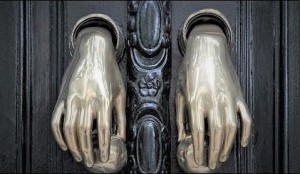 It-tokki fondi tal-qniepen tal-knisja ta’ biswiti sirt nistennihom bħal ruħ għatxana għal ftit wens. Iżda l-għana tagħhom idum biss ftit sekondi u s-skiet jerġa’ jaqa’ mill-ġdid madwari; skiet li xi kultant jinkiser bi ħsejjes ta’ magni ta’ karozzi jsuqu minn quddiemi jew b’xi passi ħfief jgħaġġlu minn ħdejja.
It-tokki fondi tal-qniepen tal-knisja ta’ biswiti sirt nistennihom bħal ruħ għatxana għal ftit wens. Iżda l-għana tagħhom idum biss ftit sekondi u s-skiet jerġa’ jaqa’ mill-ġdid madwari; skiet li xi kultant jinkiser bi ħsejjes ta’ magni ta’ karozzi jsuqu minn quddiemi jew b’xi passi ħfief jgħaġġlu minn ħdejja.Ninstab sewwasew fil-bidu ta’ trejqa dejqa fil-Għargħur; dar imdaqqsa, antika u abbandunata. Mill-faċċata ċkejkna u mitluqa tiegħi, ħadd ma jobsor bil-kobor li hemm wara dak il-bieb antik u msewwes. Ftit huma dawk li għadhom jiftakru l-ġmiel ta’ dar li kont qabel għax issa ż-żmien għadda sewwa u miegħu kaxkar il-kumpanija tal-ħlejqiet li jien tant ħabbejt. Iva, iż-żmien seraq lilhom u lill-memorji tagħhom.
It-trab qiegħed jinġabar ġewwa fija mhux ħażin u f’xi mumenti bħal inħossni midfuna ħajja. Il-madum kbir ikkulurit u mżejjen bħall-bizzilla ta’ lwien qiegħed jitgħatta ftit ftit u l-kuluri li darba kienu jżejjnuni, issa ntfew fi skala ta’ kuluri griżi u suwed.
Id-dlam isaltan f’ħafna mill-ħin tal-ġurnata ġol-kmamar tiegħi. Jinkiser biss mid-dawl li jirnexxielu jidħol minn bejn ix-xquq tal-persjani tal-injam u minn ġoż-żewġt itwieqi tal-ħġieġ li nkissru bir-riħ, għalkemm dawn ma jdumux ma jinksew ukoll bix-xtieli li telgħin bla rażan mal-ħitan tal-ġnien tiegħi.
Il-ġnien tiegħi?! Surtu nbidlet bosta. Il-ħaxix ħażin u l-fjuri slavaġ ħakmu kullimkien u s-siġar tal-larinġ li kien mogħni bihom qabel, issa ntlew bi pjanti xeblieka. U għalkemm is-siġar għadhom jagħmlu frott sabiħ u mimli, kif dan isir, jintrema’ mill-fergħa bit-toqol tiegħu stess u jinfaqa’ moħli mal-art. Iċ-ċangaturi rranġati f’mogħdijiet ħelwin mal-ġnien kollu, issa ħadu kulur ħadrani filwaqt li ħafna minnhom intradmu taħt il-ħamrija bl-ilmijiet tax-xita. Tassew! Il-ġnien ikompli jagħtini l-bixra ta’ xi dar tal-ħrejjef li ġiet mjassra b’xi seħer fuqha.
 Mitluqa hawn waħdi, sikwit nintefa’ ngħaddi ħini naħseb fl-imgħoddi, partikolarment fis-sidien tiegħi li ħadu ħsiebi b’għożża kbira. Għadni sa llum nisma’ leħinhom f’ħitani u l-passi tagħhom ferrieħa jew imkaxkra fuq arti. Għadhom jidhru sa llum it-tibdiliet li għamlu fija: xi kwadru mwaħħal mal-ħajt, xi armarju mħaffer fil-fond, xi żewġt imsiemer li kienu twaħħlu bi żball u tħallew hemm, it-tmermir bl-użu mal-poġġaman antik tat-taraġ hekk kif dawn kienu jżommu miegħu, huma u neżlin jew telgħin…
Mitluqa hawn waħdi, sikwit nintefa’ ngħaddi ħini naħseb fl-imgħoddi, partikolarment fis-sidien tiegħi li ħadu ħsiebi b’għożża kbira. Għadni sa llum nisma’ leħinhom f’ħitani u l-passi tagħhom ferrieħa jew imkaxkra fuq arti. Għadhom jidhru sa llum it-tibdiliet li għamlu fija: xi kwadru mwaħħal mal-ħajt, xi armarju mħaffer fil-fond, xi żewġt imsiemer li kienu twaħħlu bi żball u tħallew hemm, it-tmermir bl-użu mal-poġġaman antik tat-taraġ hekk kif dawn kienu jżommu miegħu, huma u neżlin jew telgħin…Mijiet għandi ta’ memorji tagħhom li jiena nibqa’ ngħożż matul l-eżistenza tiegħi. Qalbi kienet titnikket ma’ kull sid ġdid li kien jiġi u jisraqli dawn it-tifkiriet sabiex jirranġani għall-gosti tiegħu. Madanakollu, biż-żmien kollox jindara u hekk ukoll tgħallimt kif naċċetta u nifhem il-bżonn li sid ġdid iħoss ħalli jarma daru skont il-ħtieġa tiegħu. Fuq kollox, ma domtx ma ntbaħt illi dawk it-tifkiriet li kienu tant għeżież għalija, għas-sid il-ġdid ma kienux ħlief imbarazz! Sadanittant, iż-żmien ukoll jagħtik parir u llum lesta li nitlef anki dawn il-memorji tiegħi sabiex sid ġdid jiġi jieħu ħsiebi u jsalvani minn din il-kundanna ta’ solitudni li sibt ruħi fiha.
Ilni f’din il-kundizzjoni għal madwar ħames snin; minn meta l-aħħar sid xwejjaħ tiegħi ġie nieqes. Għadni niftakar ċar kristall dik il-ġurnata meta ndunajt li erġajt sfajt waħdi. Il-werrieta ta’ sidi kienu ġew flimkien man-nutar u fost il-ħars ta’ disprezz li tawni, kienu ddeċidew li jbiegħuni.
Immedjatament, bdew ġejjin aġent wara l-ieħor, iduru fil-kmamar tiegħi, iqallbu bla galbu l-affarijiet tas-sid li kelli, filwaqt li b’ton kiesaħ, kull wieħed minnhom kien jistmagħni bi prezz differenti! Il-mawriet tagħhom fija jdejjquni għax il-bruda ta’ leħinhom, huma u jdawwru lill-klijenti tagħhom madwari, tinħass minn sebgħa mili bogħod. Għal xi raġuni, donni ma tanx jien għal qalbhom. Probabbli m’għandix prezz għali biżżejjed biex jitħallsu sewwa huma u allura, ninbiegħx jew le, ma tagħmilx differenza għalihom. Iżda għalija tagħmel! U ħitani nħosshom ser jinqasmu kull darba li nara lin-nies il-ġodda li jkunu ġew jarawni, jagħtuni daharhom u joħorġu ‘l barra.
Issa inti li qed taqra l-istorja tiegħi, agħlaq ftit għajnejk u oqgħod isma’ l-ħsejjes ta’ madwarek bil-kwiet, bla ma tagħmel xejn. Hekk biss tista’ tifhem ftit x’qed inħoss jien, marbuta hawn ma’ din l-art li jien mibnija fuqha, nitmermer ftit ftit u nistenna.
Isma ftit! Il-muftieħ qiegħed idur fis-serratura tiegħi! Nistqarr li dan il-ħoss sirt ngħix għalih għax miegħu jġib it-tama tar-ritorn għall-ħajja. Iżda sfortunatament, jiena konxja li dan il-ħoss iġib miegħu wkoll il-possibilità tal-uġiegħ tar-rifjut.
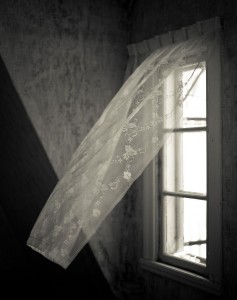 Il-passi bdew jinstemgħu resqin lejn il-ġnien tiegħi u permezz ta’ fewġa riħ, irnexxieli ntajjar il-purtieri antiki, illum kważi trasparenti, bħala merħba. Id-dawra miegħi issa drajtha sewwa. U kull darba li xi ħadd mill-klijenti jieqaf iħares ċass lejja mħasseb, jiena nħares lejh lura sabiex nipprova nifhem mill-bixra ta’ wiċċu x’se tkun id-deċiżjoni tiegħu.
Il-passi bdew jinstemgħu resqin lejn il-ġnien tiegħi u permezz ta’ fewġa riħ, irnexxieli ntajjar il-purtieri antiki, illum kważi trasparenti, bħala merħba. Id-dawra miegħi issa drajtha sewwa. U kull darba li xi ħadd mill-klijenti jieqaf iħares ċass lejja mħasseb, jiena nħares lejh lura sabiex nipprova nifhem mill-bixra ta’ wiċċu x’se tkun id-deċiżjoni tiegħu.Kemm nixtieq li stajt kont jien li nintroduċi lili nnifsi u nuri sbuħiti lill-klijenti. Li kieku stajt, kont inxarrab dan il-madum tiegħi u nesponih bħall-pittura mill-isbaħ. Li kieku stajt, kont inqalleb ftit il-ħamrija tal-ġnien tiegħi ħalli nerġa’ nagħtih il-ħajja. Li kieku stajt, kont infarfar ħitani kollha sabiex nikxef il-karattru distint tiegħi, illum moħbi wara munzell trab. Li kieku stajt, kont inħaffer bejn ix-xquq ta’ ġebla tqila li qed tagħlaq u tostor id-daħla ta’ kamra antika mimlija b’oġġetti imprezzabbli li darba wieħed mis-sidien ġodda tiegħi għatta mingħajr ma ntebaħ u li b’hekk intesiet għal kollox….
Mitlufa kif kont fi ħsibijieti, lanqas intbaħt li l-klijenti kienu lestew mid-dawra tagħhom u ġejt f’sensija biss meta smajt il-bieb tiegħi jinfetaħ mill-ġdid. Rajthom mexjin il-barra, daharhom lejja, rashom baxxuta, passithom mgħaġġla biex ifittxu jitilqu.
Karba tqila ġriet ma ħitani u persjana minnhom, bit-tregħida, nfetħet b’ħoss qawwi. Il-persuni li kienu ħerġin, daru lura maħsuda. Imma meta raw x’kien il-ħoss, daħku, għax ħasbu li kien ir-riħ!
Il-bieb ingħalaq b’tisbita. U ftit tikħil ieħor waqa’ minn ma’ ħitani, bħal demgħa li tislet qalb muġugħa.
-
Repairing the house before it rains
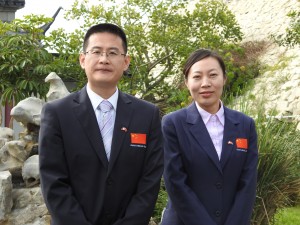 “In China we have this concept to repair the house before it rains. We give great attention to our health and well-being because certainly prevention is always better than cure,” declares Dr Xiaoming Yang, a traditional Chinese medicine physician which is presently giving his services at the Mediterranean Regional Centre for Traditional Chinese Medicine in Kordin, Paola.
“In China we have this concept to repair the house before it rains. We give great attention to our health and well-being because certainly prevention is always better than cure,” declares Dr Xiaoming Yang, a traditional Chinese medicine physician which is presently giving his services at the Mediterranean Regional Centre for Traditional Chinese Medicine in Kordin, Paola.This Centre was established in 1994 as part of a project of cooperation between Malta and China. From then on, every two years, a new Chinese medical team was sent to Malta to replace the previous group in order to continue their duty at this Centre and at clinics in Mater Dei hospital and the general hospital in Gozo. This time, due to new arrangements, this group of Chinese doctors will only stay in Malta for one year until a new group comes to take over.
“Each time, the best Chinese doctors are chosen to come over to Malta since this country is regarded as a very important hub from which to introduce traditional Chinese medicine to other countries as well. Malta’s strategic location makes it ideal to act as a significant connection between Asia, Europe and Africa.”
“Nowadays more and more people are pursuing a healthy lifestyle, and they search for ways in how to keep fit, how to prevent disease and how to prolong life. The key to all these questions is to return to nature because we are part of nature. Nature provides us with all the necessities which are indispensable for our survival. The concept of unity between man and nature is the most basic principle on which this traditional Chinese medicine was founded.”
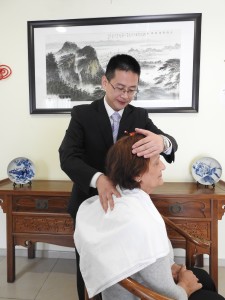 Through his experience at this Centre, Dr Yang noticed that in general Maltese patients, especially the senior population, complain from arthritis, insomnia, frozen shoulder and neck and lower back pain.
Through his experience at this Centre, Dr Yang noticed that in general Maltese patients, especially the senior population, complain from arthritis, insomnia, frozen shoulder and neck and lower back pain.“It is difficult to find a common factor to all these afflictions because many of the patients have different circumstances. However, I did notice some habits and way of life which may lead to these dicomforts, pains and illnesses.”
“In contrast to China, few Maltese people tend to do regular check-ups. Many of them go to the doctor only when they feel pain or some other disturbance. In China, hospitals send out reminders to people to attend to regular tests and many of them comply. This helps the doctor to identify any health problems at an early stage.”
“Another custom in Malta is to attend gyms, often irregularly, without proper supervision or any sensible preparation. Exercising too hard or too long, and training without suitable warming up will eventually lead to health problems. In China, people use traditional martial arts to train the mind, body and soul by doing slow but effective movements which give rise to no strain.”
“Over-exertion is another issue. Although in China I heard that the Maltese enjoy a siesta in the afternoon, in reality I found out that most people have more than one job, starting very early in the morning and continuing late at night. Such long work hours will inevitably lead to over-exertion which will then generate fatigue, strained muscles or disease. Being always so busy makes it also difficult to attend to the required amount of treatments. In fact, while in China, my patients come to my clinic to get treatment around three to five times a week, in Malta, a patient will call to have therapy only once a week or once a month. In my country, people are given permission to leave work in order to have treatment because if a worker is in pain, he may make mistakes. Taking leave to attend therapy does not seem to be as easy in Malta.”
Since regular therapy is essential to heal faster, Dr Yang dedicates himself to teach his Maltese patients how to do self-treatment exercises.
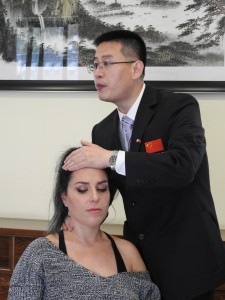 “I have trained Maltese people to make tuina manipulation by themselves generally to treat headache, migraine, neck pain or spinal pain. Knowledge of tuina manipulation involves the pressing of particular acupoints to help release discomfort or pain. This helps to increase the curative effect of my therapy at the Centre.”
“I have trained Maltese people to make tuina manipulation by themselves generally to treat headache, migraine, neck pain or spinal pain. Knowledge of tuina manipulation involves the pressing of particular acupoints to help release discomfort or pain. This helps to increase the curative effect of my therapy at the Centre.”“Tuina manipulation includes the use of hand and arm techniques to massage the muscles and tendons of the body, the stimulation of acupressure points to directly affect the flow of Qi energy through the system of channels and collaterals, and manipulation techniques to realign the musculo-skeletal and bone setting.”
Other services offered at the Centre are acupuncture, cupping, ear acupressure, and moxibustion.
“Traditional Chinese medicine is different from Western medicine since it looks at the body as a whole and does not focus just on the inflicted area. When a patient comes to me, I take time to question him about several factors in his life. I look at his appearance, his tongue, his walk. I ask about his appetite and whether he is suffering from insomnia. Then I continue to search for the root of the problem by touching various acupoints in order to identify where the real trouble is. Sometimes a patient might tell me that he is suffering from a headache but then I realize that the problem is in his neck or that it actually is psychological stress.”
During a recent open day held at the Centre with the theme A Journey into Traditional Chinese Medicine, Dr Yang explained about the different treatments which are being offered at the Centre. He also announced that in March, he would be training Maltese people in traditional Chinese martial arts.
“The intent of traditional Chinese martial arts is to relax and exercise the body in a gentle way by absorbing the energy from the surrounding nature and improving the Qi (energy in the body). For several centuries, these martial arts have helped people to obtain and enjoy a state of good health and well-being.”
 Ms Wei Han, the Chinese interpreter at the Centre provided interesting information about the use of herbs to improve health and well-being.
Ms Wei Han, the Chinese interpreter at the Centre provided interesting information about the use of herbs to improve health and well-being.“Being with these doctors I learnt a lot about traditional Chinese medicine and herbs. In the past, when our ancestors were sick, they went back to nature to find answers in how to regain their health. Through experience and experiments they found the right herbs and they used them as natural medicine to treat illnesses and more important to prevent disease and to maintain health. They also found that certain foods can also be used to treat illness. Some herbs can be used both as food and for medicinal therapy. Ginger for example is often used as spice to give flavour to other foods and obviously it is food. But it can also be used as a herb with medicinal values – it helps us to warm our stomach, to improve digestion and to control nausea.”
As a taster to the participants, the Centre’s chef prepared mutton soup with angelica and ginger, and Chinese berry tea with lily bulbs and red dates.
“We are glad to invite at our Centre all those who are interested to know more about traditional Chinese medicine, traditional Chinese martial arts and traditional Chinese philosophy. Visitors can also enjoy our traditional Chinese garden which though small, it incorporates all the typical philosophical ideas and most important elements. Stones in the garden represent the body of the world, like hills and valleys. Water is the spirit of the world providing oxygen, like blood running through the veins. The pavilion is always located at the best point where one can watch the sunset and the sunrise, and meditate about life or simply relax and have a rest. Our patients find this garden optimal to calm down and to escape from the outside world where pain ceases to exist, at least for a short time,” concluded Ms Han.
For more information, one can contact the Mediterranean Regional Centre for Traditional Chinese Medicine on 2169 1799.
(This feature was published in The Times of Malta in 2018)
Travelogue
Archives
Recent Posts
- A MATTER OF FATE
- MALTA’S PREHISTORIC TREASURES
- THE MAGIC IS IN THE DETAIL
- THE SELLING GAME
- NEVER FORGOTTEN
- Ġrajjiet mhux mitmuma – 35 sena mit-Traġedja tal-Patrol Boat C23
- AN UNEXPECTED VISIT
- THE SISTERS OF THE CRIB
Comments
- Pauline Harkins on Novella – Li kieku stajt!
- admin on IL-KARNIVAL TRAĠIKU TAL-1823
- Albert on IL-KARNIVAL TRAĠIKU TAL-1823
- Martin Ratcliffe on Love in the time of war
- admin on 24 SENA ILU: IT-TRAĠEDJA TAL-PATROL BOAT C23